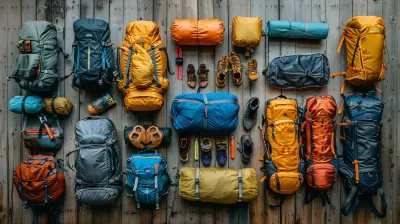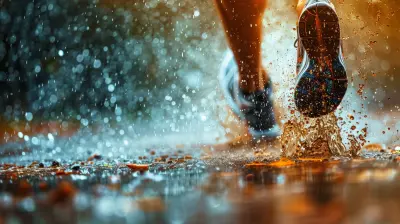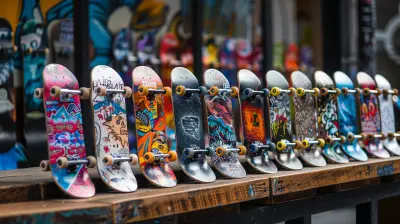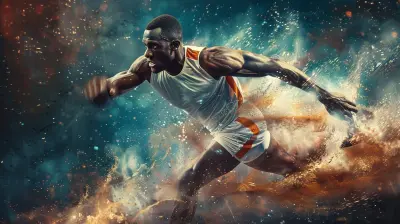Water Sports Essentials: The Must-Have Gear for Kayaking
6 May 2025
When you think of summer, what comes to mind? Maybe it's the beach, barbecues, or that sweet ice cream truck jingle you can hear from miles away. But for many adventure seekers, summer means hitting the water with a kayak and paddling through lakes, rivers, and even oceans. There's something incredibly freeing about kayaking, gliding through the water, feeling the wind on your face, and witnessing nature up close.
But here's the thing — kayaking isn't just about hopping into a boat and paddling off into the sunset. Like any sport, you need the right gear to stay safe, comfortable, and make the most of your experience. Whether you're a first-time kayaker or a seasoned paddler, having the right equipment can make or break your time on the water.
So, what exactly do you need to make your kayaking trip smooth, safe, and fun? Let's dive into the must-have gear that every kayaker should consider.
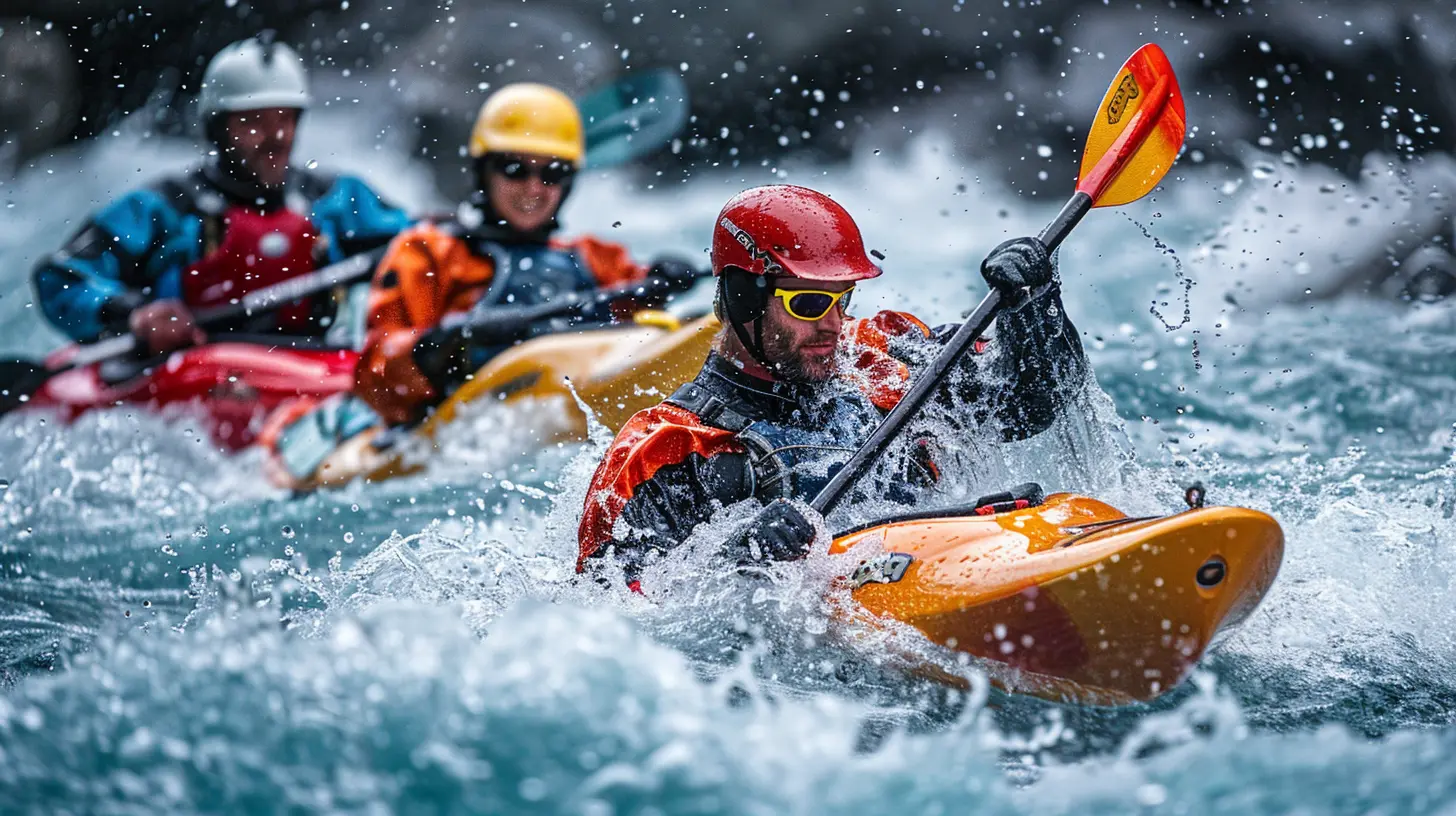
1. The Basics: The Right Kayak for You
Not all kayaks are created equal, and trust me, picking the right one is crucial. It's like choosing the right pair of shoes — you wouldn't wear hiking boots to the beach, right? Similarly, the type of kayak you need depends on where and how you plan to paddle.Sit-In vs. Sit-On-Top Kayak
- Sit-In Kayaks: These have a cockpit where you sit inside the kayak, which offers more protection from the elements. If you're into paddling in colder waters or choppier conditions, a sit-in kayak will keep you drier and more comfortable.- Sit-On-Top Kayaks: As the name suggests, you sit on top of these kayaks, leaving you more exposed to wind and water. However, they’re easier to get in and out of, and they're great for warm weather and calm waters.
Are you planning to paddle on calm lakes, or are you more of an ocean adventurer? Maybe you're into white-water kayaking? There are specialized kayaks for different types of water activities. The key is to know your environment and choose accordingly.
Kayak Length and Width
Kayaks come in various sizes, and the length and width of your kayak can affect its speed, stability, and maneuverability. In general:- Longer kayaks are faster but less maneuverable.
- Shorter kayaks turn easily but might not be as fast.
- Wider kayaks are more stable, making them great for beginners.
So, if you're new to kayaking or just looking for a leisurely paddle, a wider, shorter kayak might be your best bet. If you're looking to cover long distances or race against the current, a longer, narrower kayak will suit you better.
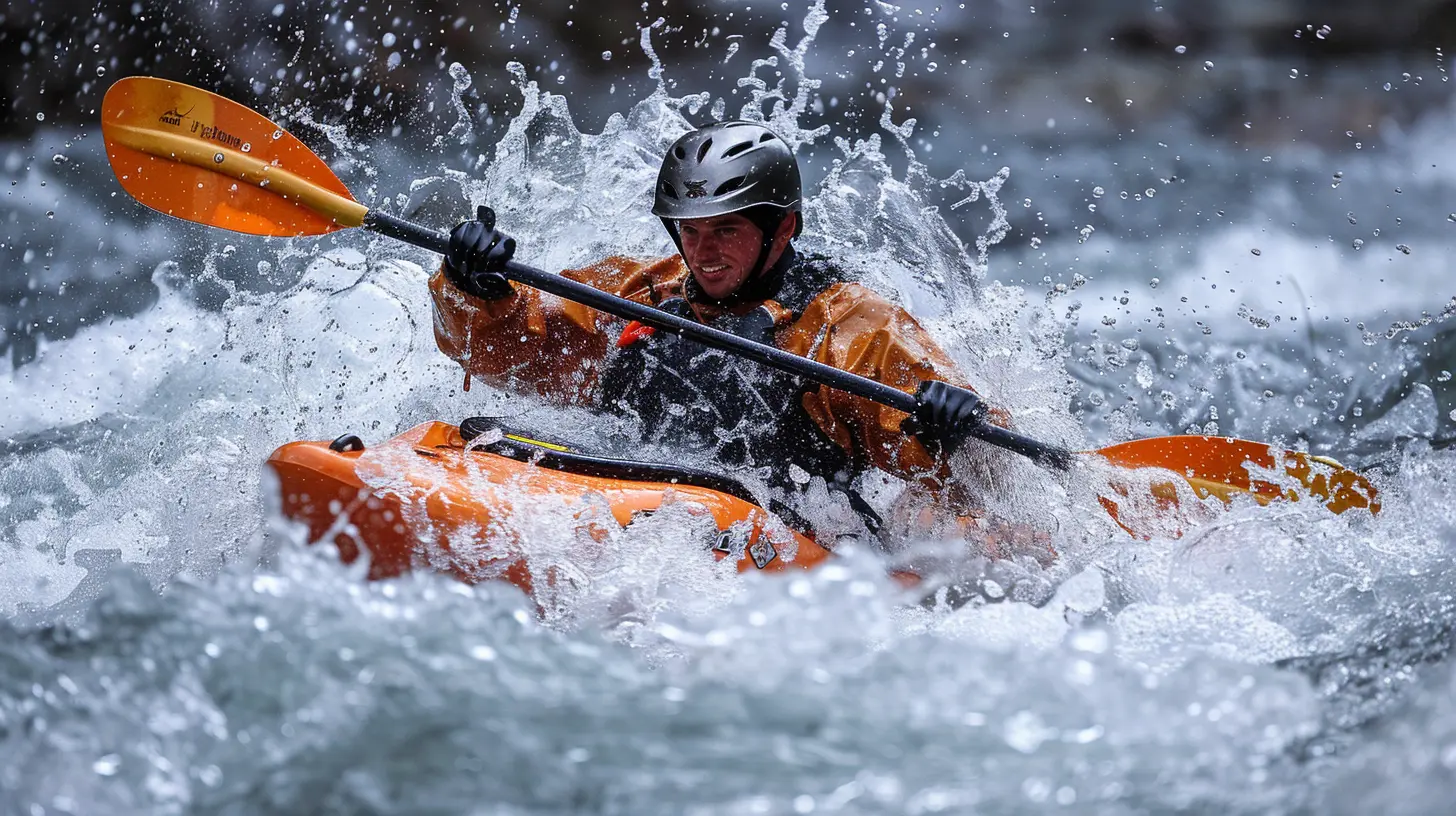
2. Paddle: Your Engine on the Water
The paddle is your power. Without the right one, you'll either be paddling in circles or exhausting yourself within the first 10 minutes. Here’s what you need to consider when choosing a paddle:Paddle Length
The length of your paddle will depend on your height and the width of your kayak. If your paddle is too short, you'll struggle to get the blade fully into the water. Too long, and you'll be hitting the side of your kayak with every stroke.As a general rule:
- For taller paddlers or wider kayaks, go for a longer paddle.
- For shorter paddlers or narrower kayaks, a shorter paddle will do the trick.
Paddle Material
Paddles come in different materials, and the material you choose can affect the paddle's weight, strength, and price:- Aluminum and plastic paddles are affordable and durable but tend to be heavier.
- Fiberglass paddles are lighter and more efficient but will cost you a bit more.
- Carbon fiber paddles are the lightest and most efficient, but they come with a higher price tag.
Trust me, if you plan on being out on the water for hours, you’ll want to invest in a lightweight paddle. Your arms will thank you later.
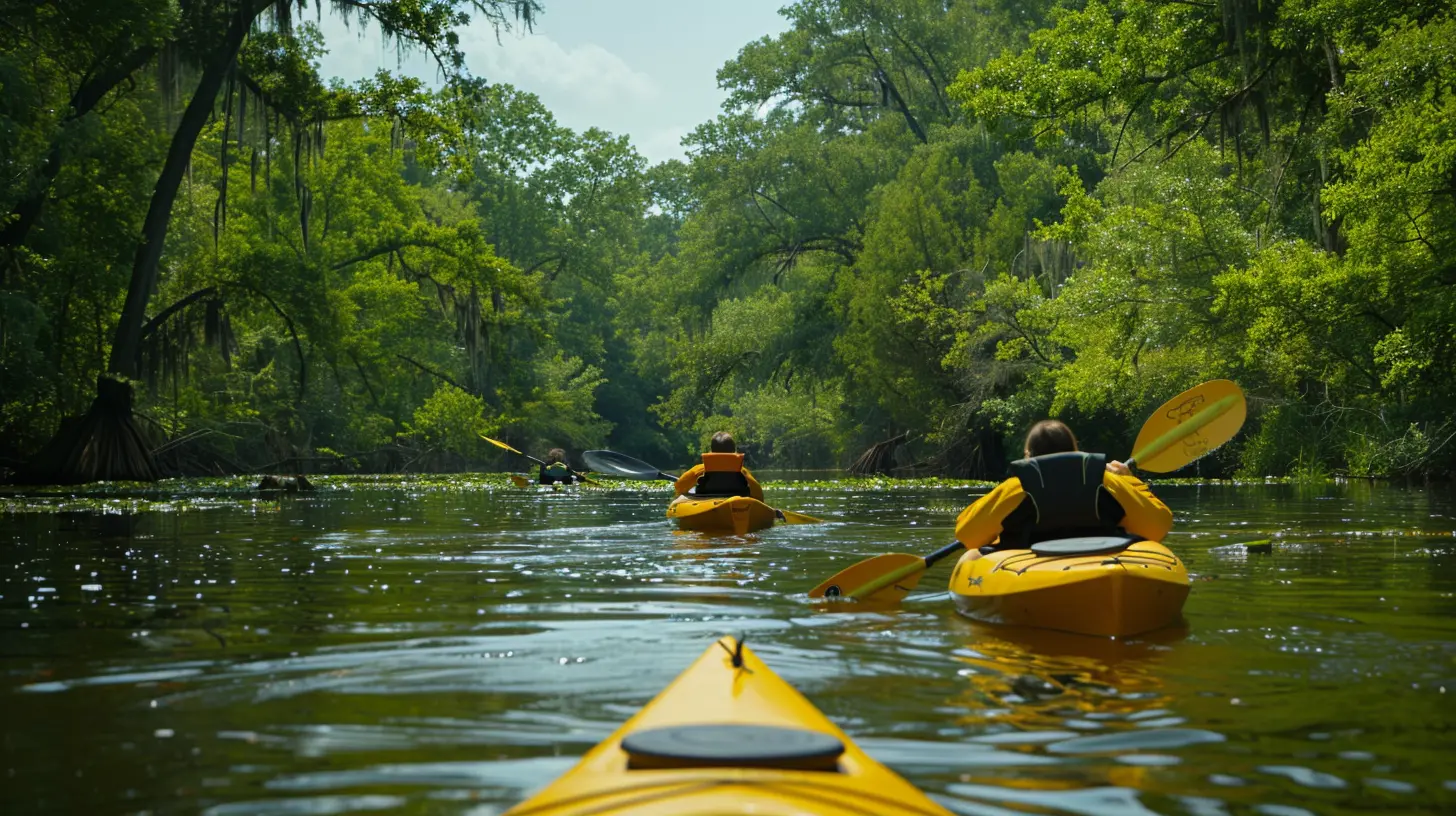
3. Personal Flotation Device (PFD): Safety First
Let’s get one thing straight: a personal flotation device (PFD) is non-negotiable when it comes to kayaking. It’s like wearing a seatbelt in your car — you might not think you need it, but if something goes wrong, you’ll be glad you have it.Types of PFDs for Kayaking
Not all life jackets are made the same. For kayaking, you want a PFD that allows you to paddle freely without restricting your movement. Look for one that's designed specifically for paddling, which will have larger armholes and a shorter length.Make sure your PFD fits snugly but comfortably, and always test it in the water before heading out on a long trip. You never know when you might need it, and you don’t want to find out it doesn't work when you're already in a tricky situation.
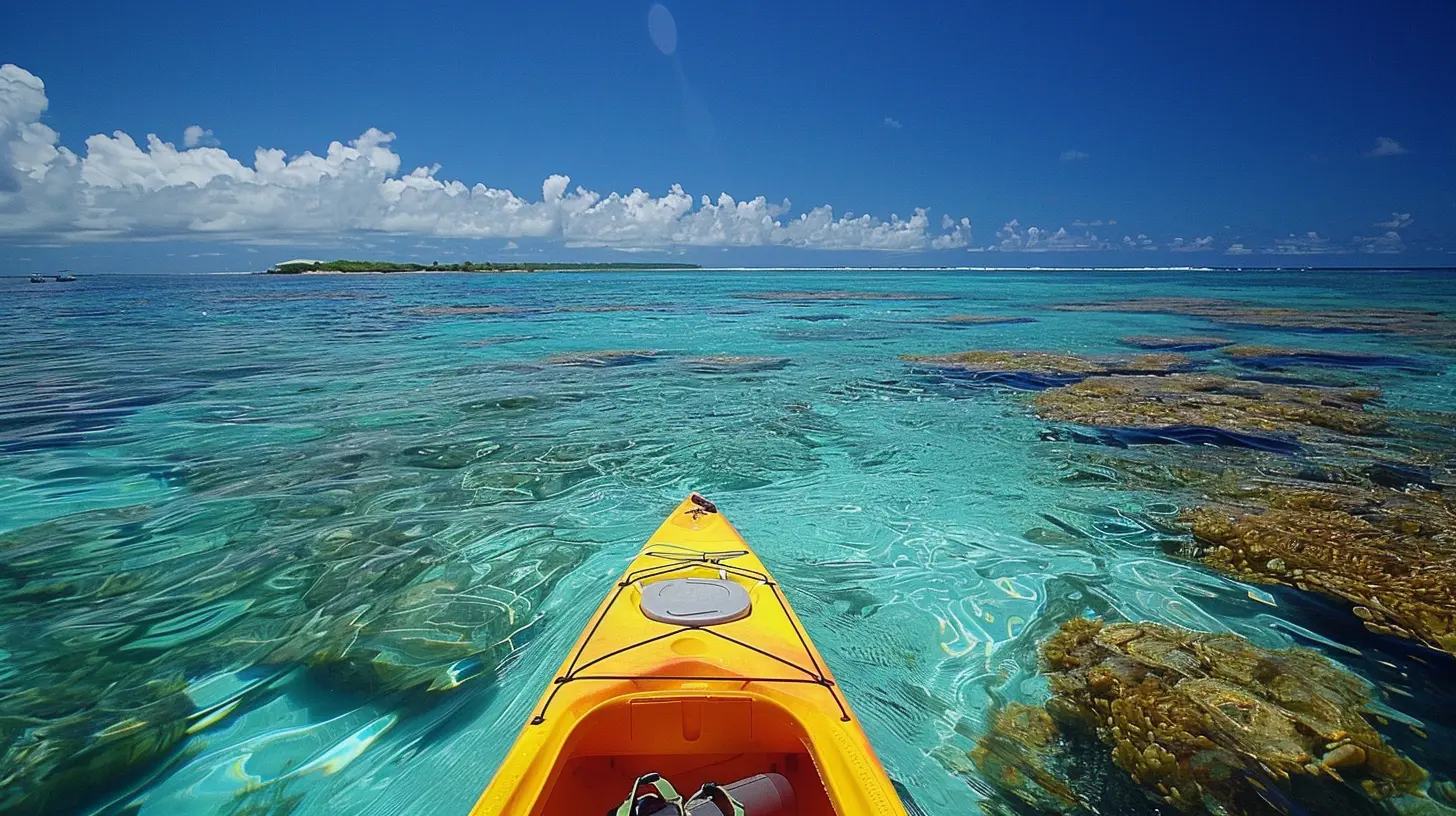
4. Spray Skirt: Stay Dry and Warm
If you’re using a sit-in kayak and paddling in rough or cold waters, a spray skirt is a must-have. A spray skirt attaches around the cockpit of your kayak and fits snugly around your waist, creating a seal that prevents water from splashing into the kayak.Even if you don't mind getting a little wet, keeping water out of your kayak is essential for maintaining buoyancy and stability. Plus, staying dry means staying warm, which is crucial if you're paddling in colder environments or during cooler months.
5. Dry Bags: Protect Your Belongings
Water and electronics don't mix. And even if you're not carrying gadgets, you’ll want a way to keep your snacks, clothes, or extra gear dry. Enter the dry bag — a waterproof bag that seals tightly to protect your belongings from water.- Small dry bags are perfect for essentials like your phone, wallet, and keys.
- Large dry bags can hold extra clothing, camping gear, or even food for longer trips.
Trust me, once you've experienced the heartbreak of soggy sandwiches or a soaked phone, you'll never go kayaking without a dry bag again.
6. Bilge Pump: Get Rid of Excess Water
Even with a spray skirt, water can still find its way into your kayak — whether it’s from waves, rain, or a splash from your paddle. That’s where a bilge pump comes in handy. This small, handheld pump is designed to remove water from inside your kayak, keeping you dry and your kayak buoyant.It's lightweight, easy to store, and a lifesaver when you need to get rid of excess water quickly. Some paddlers also carry a sponge to mop up smaller amounts of water that the bilge pump can’t reach.
7. Kayak Cart: Transporting Made Easy
Kayaks aren’t the lightest things to carry, and if you need to haul your kayak from your car to the water, a kayak cart can save your back (and your sanity). These handy carts have wheels and straps that allow you to roll your kayak from point A to point B without breaking a sweat.They’re especially useful if you’re kayaking alone or if the launch point is far from the parking lot. Plus, most kayak carts are foldable and compact, making them easy to store when you're out on the water.
8. Sun Protection: Don’t Get Burned
Kayaking is a full-body workout and a sunbathing session all rolled into one. With the sun reflecting off the water, you’re getting double the UV exposure, so don’t skimp on sun protection.Essentials for Sun Protection:
- Sunscreen: Choose a waterproof sunscreen with a high SPF, and don't forget to reapply throughout the day.- Hat: A wide-brimmed hat will protect your face, neck, and ears from the sun.
- Sunglasses: Polarized sunglasses will reduce glare from the water and protect your eyes from harmful UV rays.
- Sun-Protective Clothing: Consider wearing long-sleeved shirts and pants made from lightweight, UV-protective materials.
9. Footwear: Protect Your Toes
You might be thinking, "Why do I need special shoes for kayaking? Can't I just go barefoot?" Well, you could, but trust me, your feet will thank you if you invest in a pair of water shoes or sandals.Water shoes provide traction and protect your feet from sharp rocks, slippery surfaces, or anything else that might be lurking under the water. Plus, they dry quickly, so you won’t be stuck with wet, soggy feet all day.
10. A Map or GPS: Know Where You’re Going
It’s easy to get disoriented when you're out on the water, especially in large bodies of water like lakes or oceans. Carrying a waterproof map or a GPS device can help you stay on course and avoid getting lost.While smartphones have GPS, they’re not always reliable in remote areas or places with spotty service. A handheld GPS or a good old-fashioned map can be a lifesaver, especially if you're exploring unfamiliar waters.
Final Thoughts
Kayaking is one of the most exhilarating ways to experience the great outdoors. But like any sport, having the right gear can make all the difference between a fantastic day on the water and a frustrating or even dangerous one.From finding the perfect kayak to choosing the right paddle and ensuring your safety with a PFD, investing in high-quality, essential gear will enhance your kayaking experience and keep you safe. So whether you're paddling through calm lakes or tackling white-water rapids, make sure you're prepared with these must-have kayaking essentials.
Now, all that’s left is to grab your gear and hit the water. Adventure awaits!
all images in this post were generated using AI tools
Category:
Sports EquipmentAuthor:

Uziel Franco
Discussion
rate this article
6 comments
Camden McQuade
Great article! Kayaking can be such a rewarding experience, and having the right gear makes all the difference. Your tips on essentials are spot on—can’t wait to hit the water with this newfound knowledge!
May 19, 2025 at 12:45 PM

Uziel Franco
Thank you so much! I'm glad you found the tips helpful. Enjoy your time on the water!
Runeveil Mercado
Great article! You highlighted the essential gear for kayaking perfectly. I particularly appreciated the tips on choosing the right life jacket and paddle. Proper equipment truly enhances the experience and ensures safety on the water. Thanks for sharing these insights!
May 18, 2025 at 3:37 AM

Uziel Franco
Thank you for your kind words! I'm glad you found the tips helpful. Safety and the right gear are key to a great kayaking experience!
Astoria Graham
Great article! Essential gear like quality life jackets, paddles, and dry bags enhances safety and enjoyment in kayaking adventures. Stay safe on the water!
May 16, 2025 at 3:37 AM

Uziel Franco
Thank you! I'm glad you found it helpful. Safety gear is indeed crucial for a great kayaking experience!
Layne Cannon
Ready to conquer the waves? Equip yourself with the right gear and embrace the thrill of kayaking! From paddle to personal flotation devices, the essentials can elevate your adventure. Get out there and let the water ignite your passion!
May 15, 2025 at 12:20 PM

Uziel Franco
Absolutely! The right gear is key to a safe and exciting kayaking experience. Happy paddling!
Avianna McKittrick
Great article! Kayaking is such a fun way to connect with nature. Whether you're a seasoned pro or a curious newbie, having the right gear makes all the difference. Grab your paddle and let the adventures begin—there's a whole world waiting to be explored! 🚣♂️🌊
May 12, 2025 at 12:40 PM

Uziel Franco
Thank you! I couldn't agree more—having the right gear truly enhances the kayaking experience. Happy paddling! 🌊🚣♂️
Ford McClary
Forget the paddle! The real essential for kayaking is the perfect snack. Because when you're conquering rapids, gummy bears are the ultimate fuel. Happy paddling!" 🛶🍬
May 8, 2025 at 2:50 AM

Uziel Franco
Absolutely! Snacks like gummy bears can provide a quick energy boost on the water. Fueling up is just as important as having the right gear for an enjoyable kayaking experience! 🛶🍬
